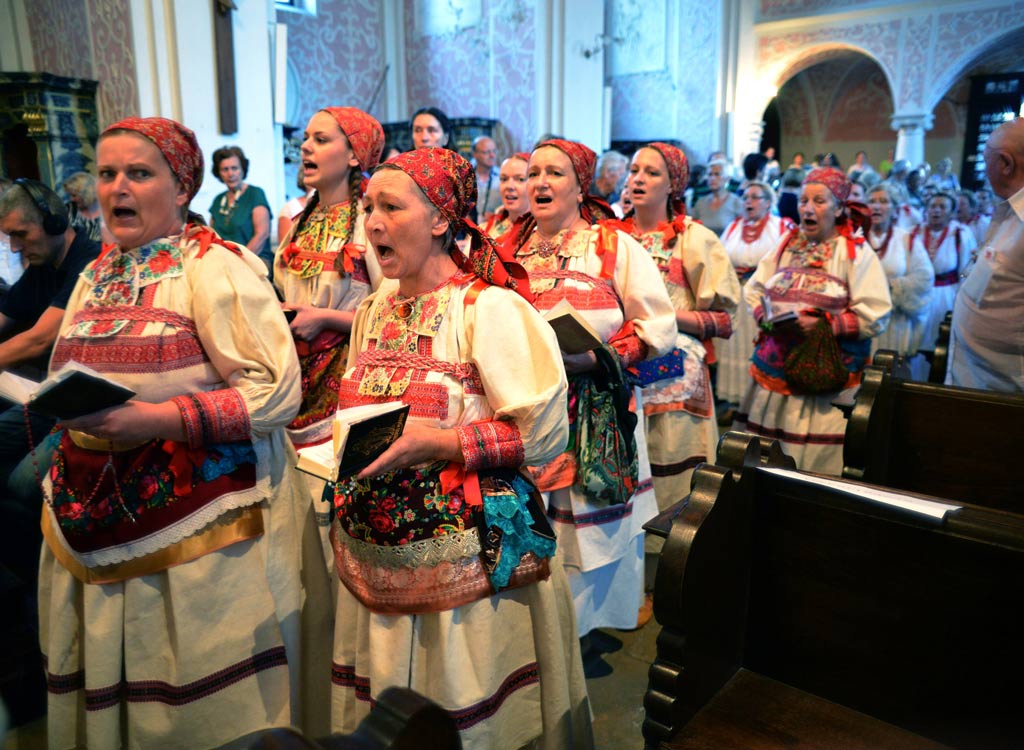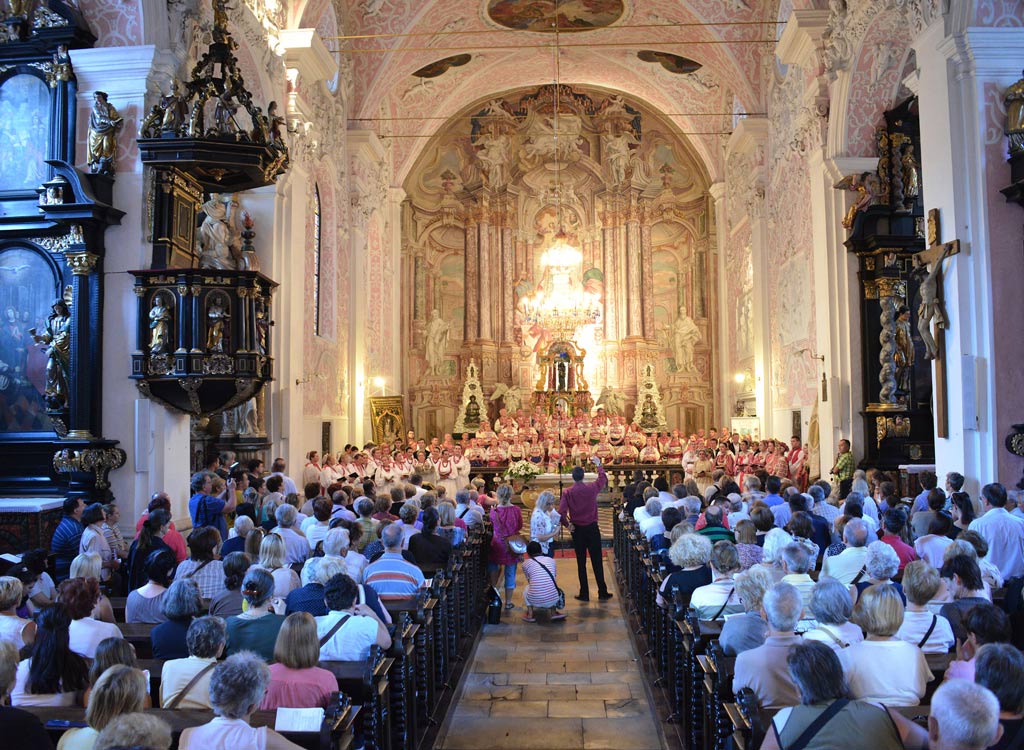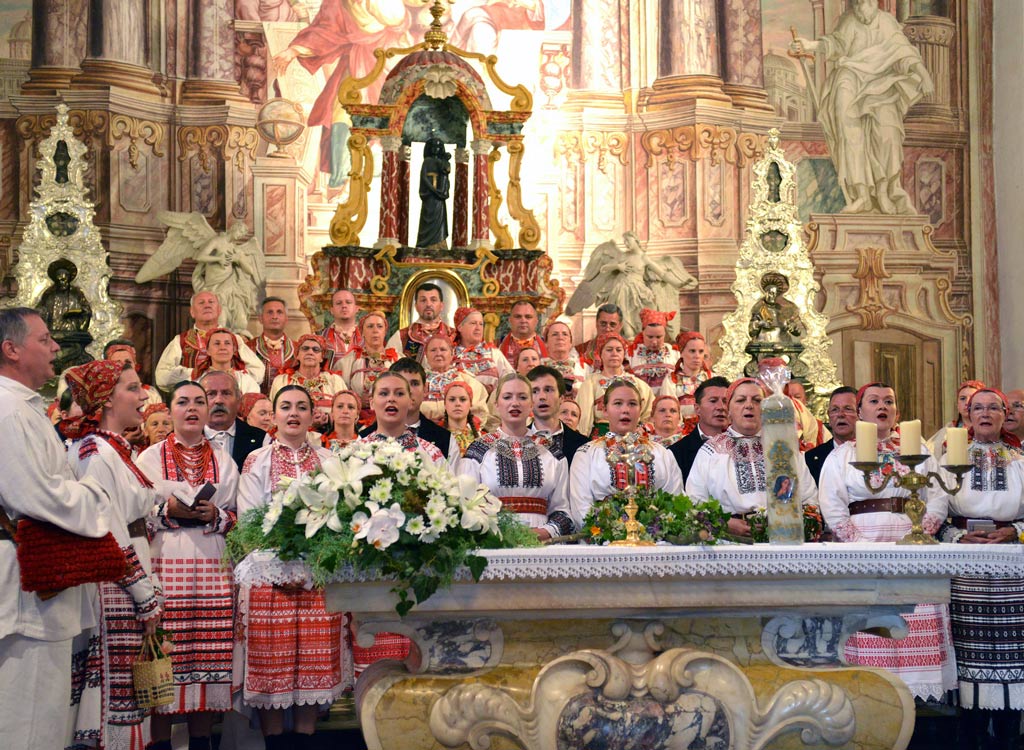47TH INTERNATIONAL FOLKLORE FESTIVAL IN ZAGREB, CROATIA
Marian Pilgrimage Songs Concert “Pojte, pojte romari, k Majko Božjoj Bistrički”
St. Catherine’s Church, Katarinski trg, Sunday, July 21, 2013 at 19.30
This year’s concert of traditional Church music presents the pilgrimage traditions of Roman Catholics in Croatia, particularly those of the Kajkavian dialect speakers from the surroundings of Zagreb, from Bešići, Gračani, Remete and Posavski Bregi, Kuplenovo and Donja Lomnica.
For decades they have prayed and sung together as they walked on their pilgrimage to the Statue of the Black Madonna, Our Lady and the Child, at the
national shrine in Marija Bistrica. The practice of pilgrimages, travel and sojourn in holy places, is known amongst almost all world religions. However, pilgrimages have also been a form of cultural and religious communication, by which new experiences and various form of life practices have been passed on. Conceptions have been exchanged relating to architecture and culture, while the mere mobility of pilgrims is regarded as the first form of tourism.
Od ranoga srednjeg vijeka kršćani su hodočastili u Svetu Zemlju, no poslije su te putove zamijenili bližim i sigurnijim odredištima u Europi. Hodočašća svecima i Blaženoj Djevici Mariji u “velika središta” poput Rima, Santiaga de Compostelle, Mariazella itd. mogli su si priuštiti viši slojevi društva, ali se težnja tim svetištima i Rimu kao središtu iščitava u riječi romar, koja prvotno označava onoga koji hodočasti u Romu – Rim, a koja u središnjem i sjeverozapadnom dijelu Hrvatske označava svakog hodočasnika u udaljena ili bliža svetišta.
Apart from prayer and penance, the singing of pilgrimage songs holds a special place in pilgrimages. There are several layers of songs in the tradition of Central and North-western Croatia. The older songs take their origins from Mediaeval hymnology, part of the songs are local variants of European Marian songs imposed by the priesthood, while the most recent layer is made up of authored songs that the people have come to accept as their own. The communities have adapted all the songs to their music taste, partly modified or even completely distanced from the original model and thus made them part of traditional repertoire.
Tomislav Habulin and Irena Miholić




